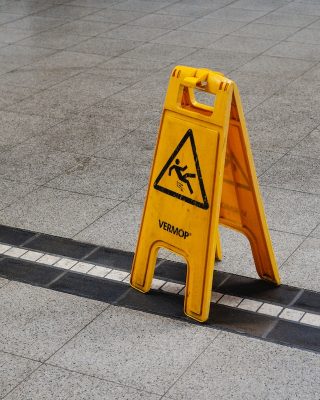Introduction
Slip and fall accidents are among the most common personal injury cases. They occur when a person slips, trips, or falls on someone else’s property due to hazardous conditions. These accidents can lead to severe injuries, including broken bones, head trauma, and spinal cord injuries. In this blog article, we will discuss the common causes of slip and fall accidents, the injuries they can cause, and how to establish liability in such cases.
Common Causes of Slip and Fall Accidents
Slip and fall accidents can happen anywhere, but some places are more prone to them than others. Here are some common causes of slip and fall accidents:
- Wet or Slippery Floors: This is the most common cause of slip and fall accidents. Floors can become slippery due to spills, rainwater, or snow. If the property owner fails to clean up the spill or provide proper warning signs, they may be liable for any resulting injuries.
- Uneven or Damaged Flooring: Uneven or damaged flooring can cause tripping hazards. Such hazards include cracked tiles, loose carpeting, or uneven sidewalks.
- Poor Lighting: Inadequate lighting can make seeing potential hazards, such as steps or uneven flooring, difficult.
- Cluttered Walkways: Cluttered walkways can cause tripping hazards. Examples include cords or cables running across the floor or objects left in walkways.
- Lack of Handrails: Handrails provide stability and support for individuals while walking up or down stairs. The absence of handrails can increase the risk of falling.
Injuries Caused by Slip and Fall Accidents
Slip and fall accidents can cause a wide range of injuries, some of which can be severe. Here are some of the most common injuries caused by slip and fall accidents:
- Broken Bones: Slip and fall accidents can lead to broken bones, such as a broken hip or wrist. These injuries can be especially dangerous for older adults.
- Head Injuries: Head injuries can occur when a person falls and hits their head on the ground or another object. These injuries can range from minor concussions to traumatic brain injuries.
- Spinal Cord Injuries: Slip and fall accidents can cause spinal cord injuries. These injuries can result in partial or complete paralysis.
- Soft Tissue Injuries: Soft tissue injuries, such as bruises and sprains, are common in slip and fall accidents.
Establishing Liability in Slip and Fall Accidents
To establish liability in slip and fall accidents, the injured party must show that the property owner was negligent in maintaining their property. Here are some factors that can help establish liability:
- Notice: The property owner must have known or should have known about the hazardous condition that caused the slip and fall accident. For example, if a spill occurred in a grocery store and was not cleaned up promptly, the store owner should have known about it.
- Time: The length of time that the hazardous condition existed can also be a factor. If the hazardous condition existed for an extended period, the property owner had more time to discover and address it.
- Control: The property owner must have had control over the hazardous condition. For example, if a tenant causes a spill in their apartment and a guest slips and falls, the property owner may not be liable since they did not have control over the tenant’s actions.
- Reasonableness: The property owner must have acted reasonably in maintaining their property. For example, if a property owner knew that the handrail on their stairs was loose but failed to fix it, they may be liable if someone falls and is injured.
Conclusion
Slip and fall accidents can cause serious injuries, and establishing liability can be complex. If you or a loved one has been injured in a slip and fall accident, it is essential to seek medical attention immediately and consult with a personal injury lawyer. An experienced lawyer can help determine liability and seek compensation for medical expenses, lost wages, and other damages.
To avoid slip and fall accidents, property owners should take the following steps:
- First, regularly inspect the property for hazards and address them promptly.
- Provide warning signs or barriers around hazardous conditions.
- Ensure adequate lighting throughout the property.
- Keep walkways and stairs clear of clutter.
- Install handrails on stairs and other areas where support is necessary.
By taking these steps, property owners can reduce the risk of slip and fall accidents and ensure the safety of their guests and visitors.
Disclaimer
This website contains general information about legal matters. The information is not advice, and should not be treated as such. You must not rely on the information on this website as an alternative to legal advice from your lawyer or other professional legal services provider. This publication is for your information and interest only. You should never delay seeking legal advice, disregard legal advice, or commence or discontinue any legal action because of information on this website.
The receipt of any information from us in this publication is not intended to create nor does it create a solicitor-client relationship between you and Fraser Lawyers Pty Ltd.
For specific legal advice you should immediately contact Fraser Lawyers on (07) 5554 6116
Liability limited by a scheme approved under professional standards legislation.

